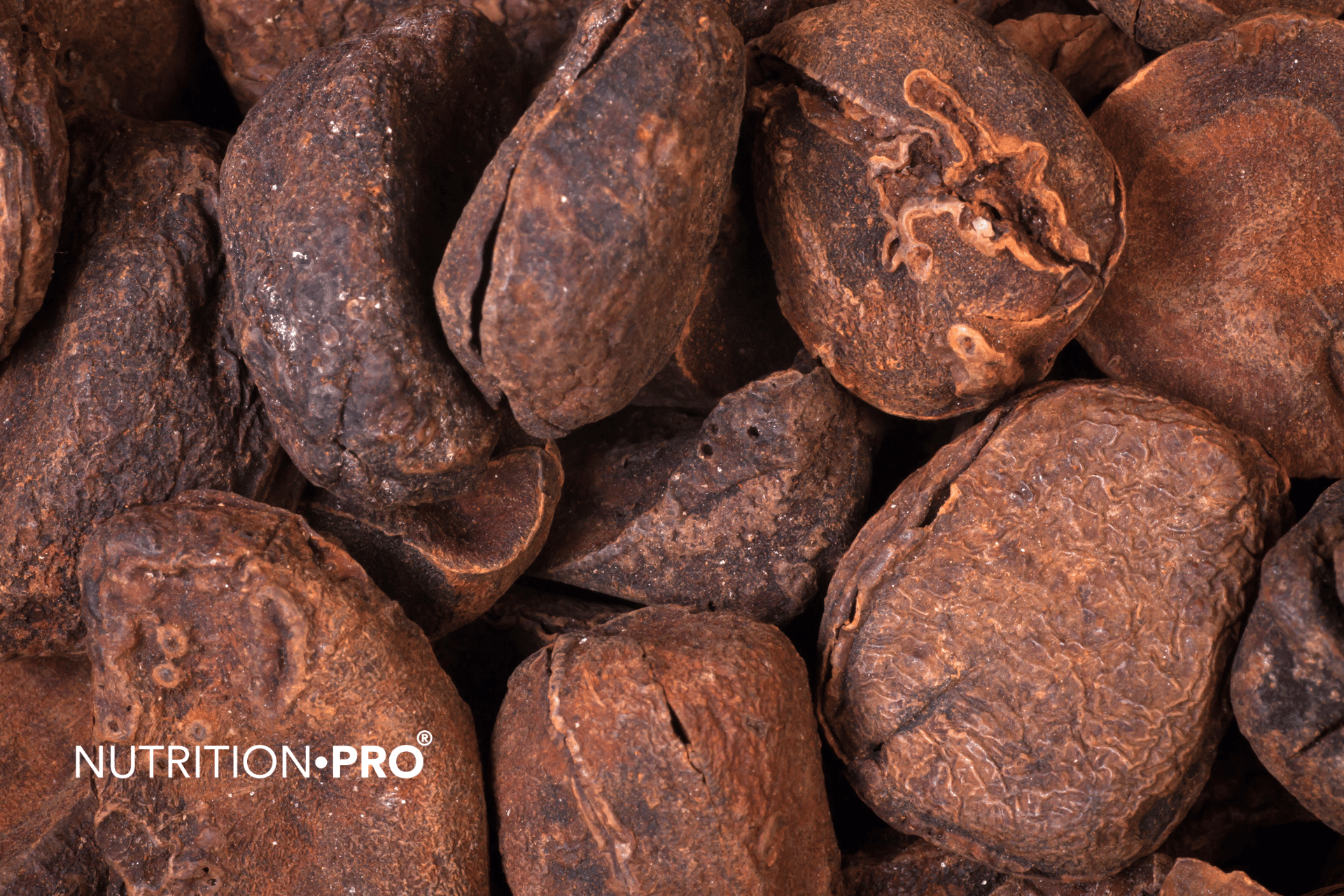Chromium is a mineral, also described as an essential trace element. It comes in two main forms, hexavalent and trivalent.
Hexavalent is the form used in pigments, dyes, plastics and ink.
Hexavalent chromium is one of the most powerful minerals on earth. It is toxic and cannot be safely absorbed. It should be avoided except for industrial use.
The trivalent is the form found in healthy foods. This is the shape our body needs. Our body is not able to produce chromium and must consume it via an external source.
It is a trace element because we don't need very much of it to perform the tasks for which it is designed. Lack of chromium can affect the ability to lose weight .
Chromium picolinate is a very common ingredient in the best fat burners , and that's no coincidence.
How does chromium help with weight loss?
There are people who train and see little or no results. Your training program may not necessarily be the cause. There may be a deeper cause at the cellular level.
A common problem is insulin resistance. Insulin resistance can lead to a prediabetic state and eventually to type 2 diabetes. One of the main causes is a lack of chromium in the diet .
A healthy diet always accompanies an exercise regimen. It's great to be healthy. More importantly, it is essential to provide the nutrients your body needs.
When the body has the right nutritional balance, it can function at optimal levels. Good fuel helps repair muscles. It can also reduce hunger. Getting the right nutrients can cause the body to stop looking for food to fill the void.
Chromium is one of the essential nutrients the body needs . Eating healthy foods is fine, but useless if the body is unable to use them for energy. Chromium has a specific job to do with this process.
When we eat, our digestive system converts food into glucose. Glucose is the main source of fuel for every cell in our body. Once broken down, it is then sent into the bloodstream to nourish our cells.
The pancreas produces insulin to help cells absorb glucose. Insulin's job is to pull glucose from the bloodstream into the cell. More glucose in the blood increases the amount of insulin needed to process it. Insulin spikes occur every time we eat to regulate the amount of glucose in our bloodstream.
Too much glucose in the blood can damage blood vessels. It causes oxidative stress. This type of damage can lead to atherosclerosis. This is why people with diabetes are at increased risk of heart disease and stroke.
Excess circulating glucose can also damage nerves. This is the reason why people with uncontrolled diabetes suffer from neuropathy. Glucose cuts off the ability of nerves to send signals.
Insulin and chromium work with other elements to prevent such damage. They both need to work properly to avoid the destruction that free glucose can cause. They depend on each other to do the job.
Once glucose lines up with a cell, it waits to enter. The insulin comes in and opens the door for the glucose to come in. This is when the chrome gets to work.
Chromium binds to the glucose transporter and pushes the glucose out the door. If there is no chromium or not enough in the body, the glucose just keeps hanging out. It floats around in the bloodstream waiting to enter. The body will eventually downgrade the receiver.
When more food is ingested, more glucose is produced. The problem is compounded. The body thinks it doesn't have enough insulin to open the door to glucose. The pancreas receives the signal. It does more.
The increase in insulin in the bloodstream sends a signal that increases the need for more glucose. The person craves sugar to correct the balance. When more sugar is consumed, more insulin is produced.
It's a vicious circle. Insulin resistance is a persistent problem with few or no symptoms. It may take some time before the person knows there is a problem.
Excess insulin in the body performs another task. If the amount of glucose is not reduced by its presence, insulin tells the body to store it as fat. It is insulin that monitors fat storage and tells when to release it.
The correct amount of chromium in the body can prevent this vicious cycle from the start. If chromium were available, the insulin would open the door and the chromium would help escort him inside. There, the glucose would fuel the cells as it was designed.
Insulin would decrease in the bloodstream because the glucose level would return to normal. The craving for sugar and carbohydrates would disappear and weight loss could occur.
What are the benefits of chromium?
As discussed above, chromium plays a vital role in glucose metabolism. It is also an important part of the balance preventing insulin resistance. Early prevention can significantly reduce the risk of type 2 diabetes.
Chromium is not easily absorbed. Deficiency is a problem for many people who do not maintain a healthy diet. This is also a problem with older people who cannot absorb nutrients as efficiently.
Some of the deficiency symptoms can be:
- anxiety
- Tiredness
- Blood sugar metabolism problems
- Impaired cholesterol metabolism
- A delayed ability to heal
- Atherosclerosis
- Growth abnormalities in young children
The recommended daily intake of chromium is 25 micrograms. It is present in broccoli, turkey breast, red wine, green beans, and potatoes, to name a few. A healthy diet of lean meats, grains and vegetables can provide the necessary balance.
Many will argue that soil mineral depletion, or the processed food industry, has reduced the amount of chromium available in our food supply. Even if we make healthy food choices, we may still not be getting the number of nutrients we need. It may be necessary to top up the chrome if this is the case.
What are the different kinds of chromium supplement?
Chromium picolinate is the most common form of supplement. Picolinate, picolinic acid, is a natural chelator. It allows the mineral to better absorb by surrounding it with a series of neutral molecules, which will allow it to pass into the cell membrane. It delivers it safely for the body to use it properly.
Chromium also comes in a glycinate. It is not as common to find as picolinate. Chromium glycinate is related to the amino acid glycine. Which delivers the same way as picolinate. Glycine is made by the body as part of our DNA.
Another form is chromium nicotinate. Nicotinate is a salt or ester of the B-complex vitamins. This form is not as common in stores, but can be found online. It contains a form of niacin.
Picolinate, glycinate, and nicotinate are all delivery systems that facilitate chromium entry into cell membranes. Without them, the chromium would be prevented from entering due to its positive ionic state. There is no definitive test to prove that one is superior to the others.
Whichever form you choose, the benefits are the same. Bodybuilders and athletes experience enhanced performance. People with type 2 diabetes or insulin resistance have reported normalizing effects and in some cases reversal. Improvements in endothelial function have been reported. Additionally, improvements in cholesterol levels, oxidative stress biomarkers, and atherosclerosis were reported in a 2017 study.
Additionally, it has been given to treat acne, polycystic ovary syndrome, Turner syndrome, bipolar disorder, schizophrenia, reactive hypoglycemia, and in the elderly to reduce mental decline. Whether you choose chromium for weight loss or for other health benefits, including it in a healthy diet is essential. It is not recommended to take more than 1000 mcg per day.
Are there any contraindications with taking chromium?
If you are already taking medication for any of the above diseases or disorders, it is imperative to speak with a doctor before supplementation. The amount of food sources is minimal. Supplements come in much higher doses with delivery systems for better absorption. A higher dose increases the risk of interactions with medications and other supplements.
People who take insulin or have kidney, liver, or thyroid disease should talk to their doctor about mineral metabolism. It may also interact with medications prescribed for these and other conditions.
Interactions with chromium are, but not limited to:
- Prednisone
- Levothyroxine
- Nonsteroidal anti-inflammatory drugs such as (ibuprofen, naproxen, and aspirin)
- Antacids or proton pump inhibitors
Make sure a doctor knows about all medications, including supplements, if they prescribe chromium for you. It can be taken as a supplement over the counter. It is also used in hospitals to treat severe insulin resistance and uncontrolled high blood sugar.
Intravenous administration is used for urgent treatment for severe diagnosis. Blood sugar levels were noted to improve within 12 to 24 hours of treatment. The intravenous form of chromium is chromium chloride.
Chromium can be taken alone. However, it is commonly included in multi-mineral formulations. Some multivitamins may also include it. If you add a separate dose, check other supplements to make sure it is not in excess.
There are no adverse effects from adequate chromium supplementation. The body will only absorb enough to replace the deficiency. Taking the supplement with milk or phosphorus-rich foods may reduce absorption.
Chromium is mainly extracted from a healthy diet. Prolonged use of excessive supplementation has led to liver, kidney, gastrointestinal and skin problems in the form of dermatitis. Once supplementation has started, the introduction of chromium-rich foods should replace the extra chromium over time.
Chromium is an integral part of our diet. It is important for glucose metabolism and processing. By improving the efficiency of insulin in the body, the cycle of insulin resistance can be interrupted.
There is another benefit of chromium in reducing insulin resistance during weight loss. People who lose weight often have problems with loose skin. When glucose is properly metabolized, the skin may not reduce at the same rate. Insulin not only opens the door to glucose, but also to proteins and amino acids.
As the insulin was resisted, the basics were not able to improve the skin. Collagen production may be reduced and the skin will lose its elasticity. Before supplementing with collagen or going under the knife, increasing chromium intake can improve loose skin.
Chromium is not well studied. Some studies have shown improvements. Other studies have not. There is as yet no correlated study that has made a conclusive recommendation for a specific dosage. There is no industry standard for dosage adjustment for the treatment of any condition. When researching the benefits of chromium, there are many conflicting points of view.
One thing is certain. It is available in most foods. It plays a vital role in the function of metabolism. We cannot live without it. Deficiency of this mineral is linked to illness and disease in many forms. All are still being discovered.
Conclusion
Chromium is essential to our ability to metabolize carbohydrates, fats and sugars. Many other claims are under consideration. The most common use is to regulate blood sugar and resolve insulin resistance.
Insulin resistance has recently been found to be a prerequisite for many diseases. Alzheimer's disease is, by some, considered type 3 diabetes. Until recently, it was unknown that insulin resistance could arise in the brain. It is a precursor to dementia and stroke.
There is also a study looking at glaucoma. Chromium has been shown to prevent glaucoma at certain levels. Further tests must be performed to prove the claim.
Chromium is an excellent supplement for weight loss and longevity. It is frequently added to bodybuilding and athletics regimen. Chromium improves the efficiency of insulin which in turn regulates the absorption of amino acids.
When our body has the tools it needs to return to a healthy state, it responds. it is not uncommon to see significant weight loss within the first week of a healthy diet that includes chromium. Improved metabolic health can eliminate water and fat faster.















